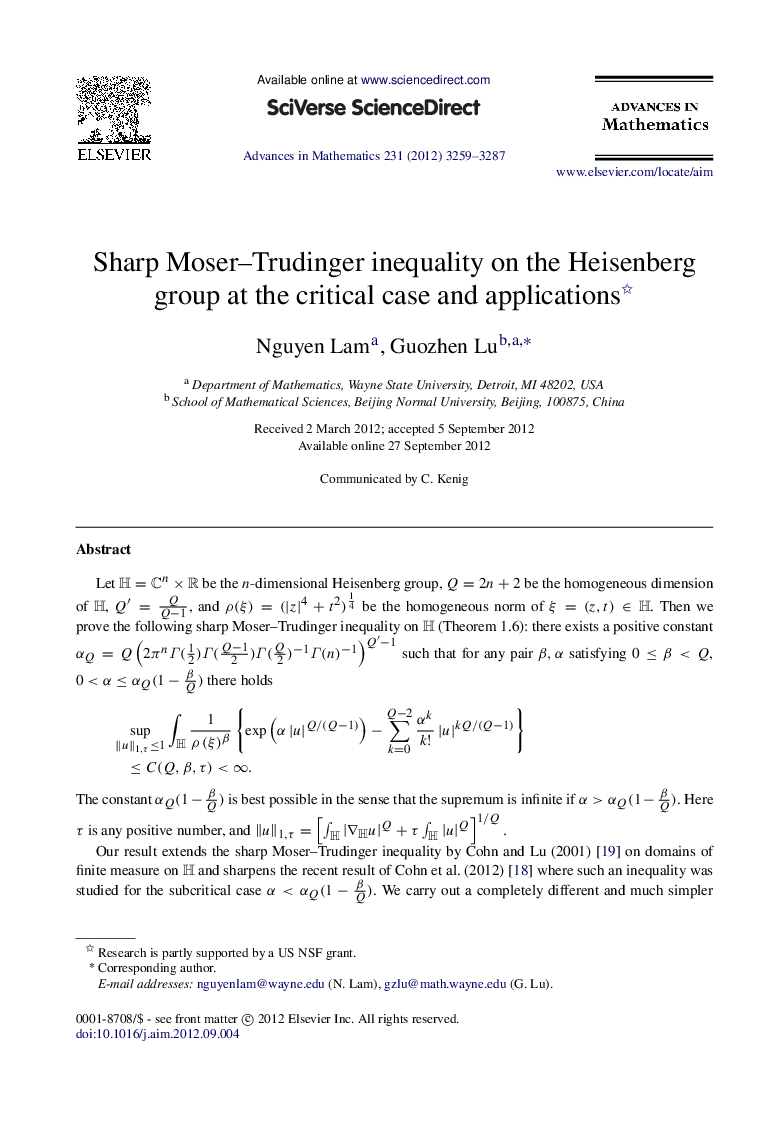| Article ID | Journal | Published Year | Pages | File Type |
|---|---|---|---|---|
| 4666290 | Advances in Mathematics | 2012 | 29 Pages |
Let H=Cn×RH=Cn×R be the nn-dimensional Heisenberg group, Q=2n+2Q=2n+2 be the homogeneous dimension of HH, Q′=QQ−1, and ρ(ξ)=(|z|4+t2)14 be the homogeneous norm of ξ=(z,t)∈Hξ=(z,t)∈H. Then we prove the following sharp Moser–Trudinger inequality on HH (Theorem 1.6): there exists a positive constant αQ=Q(2πnΓ(12)Γ(Q−12)Γ(Q2)−1Γ(n)−1)Q′−1 such that for any pair β,αβ,α satisfying 0≤β
